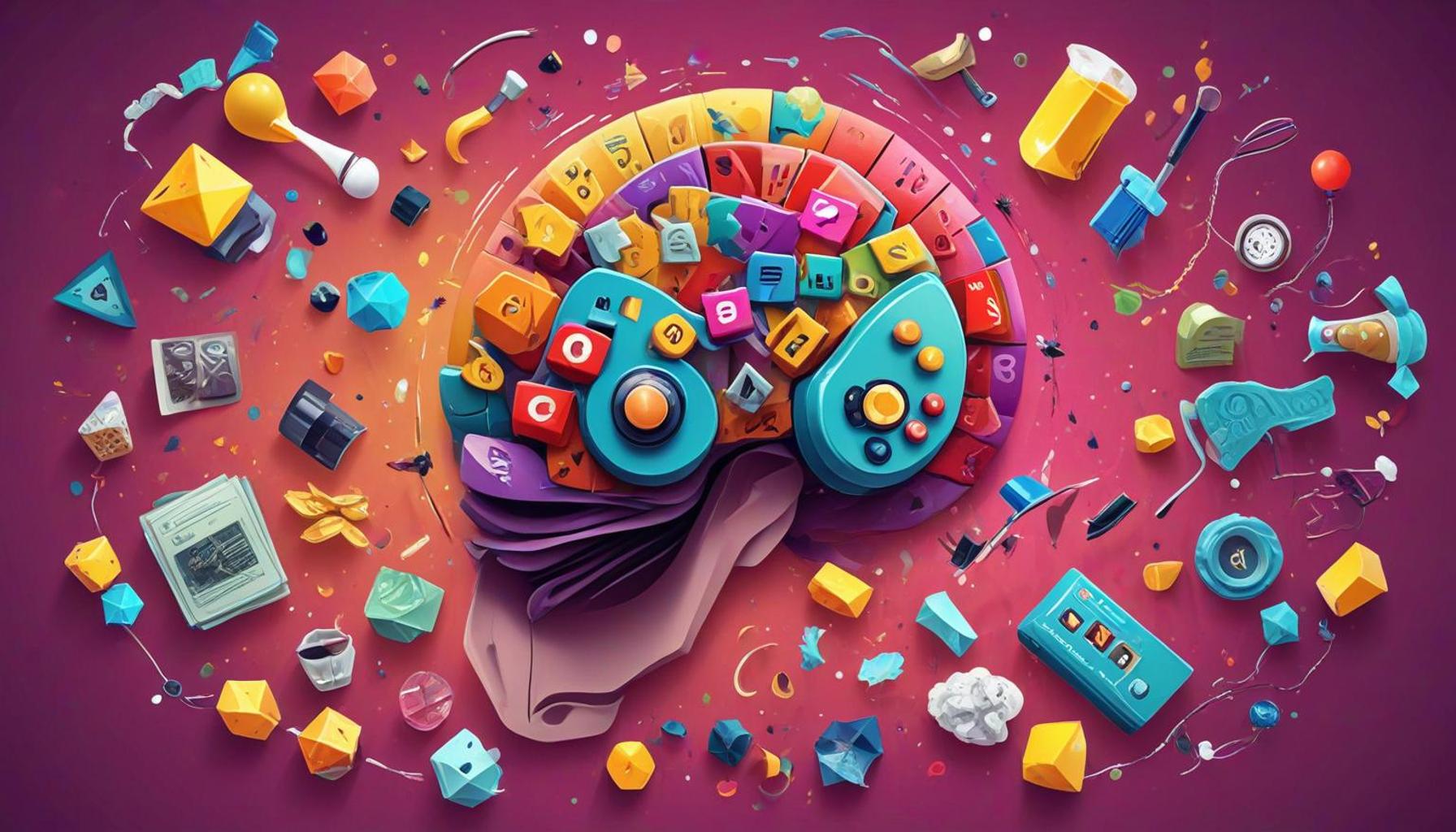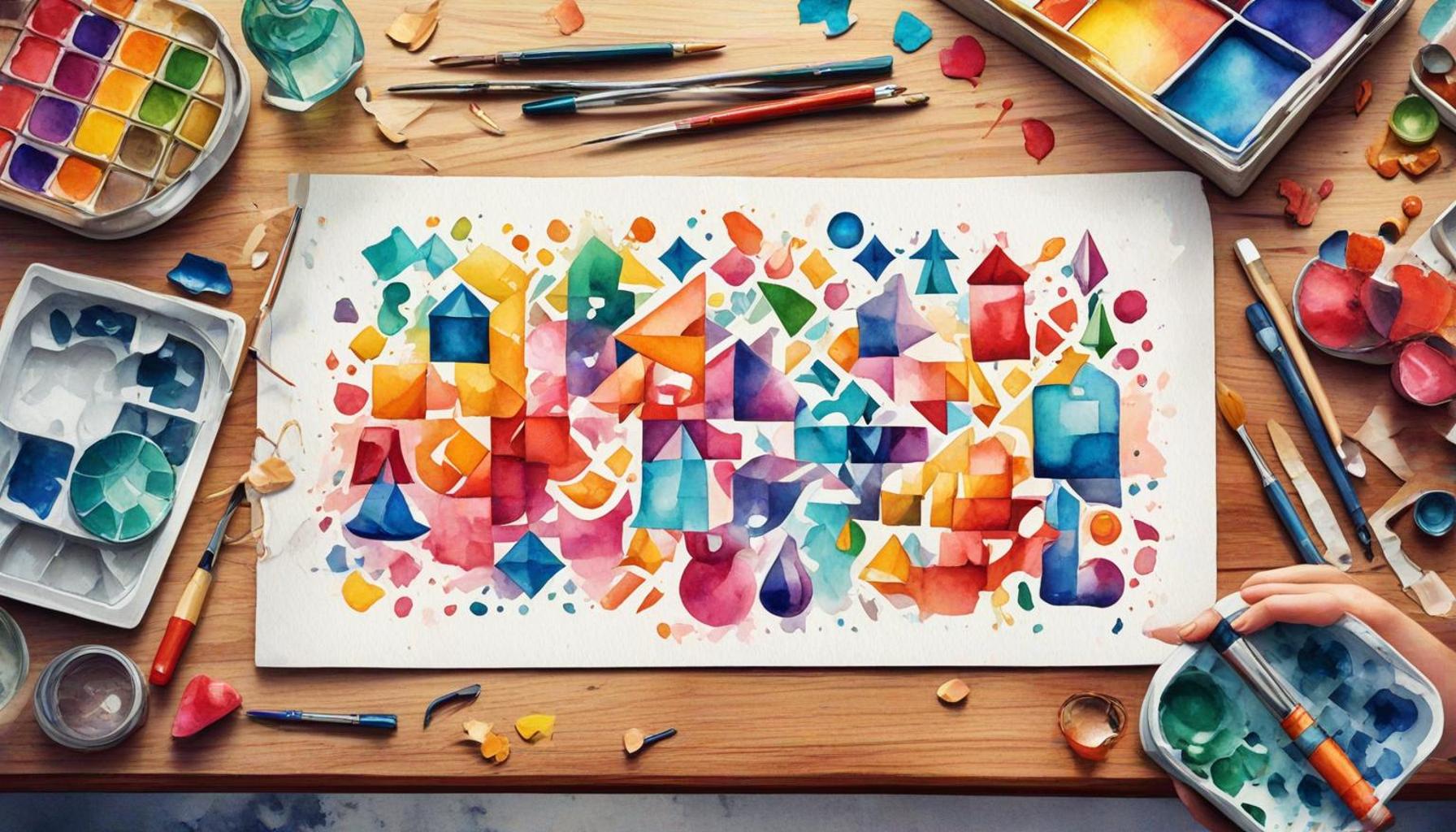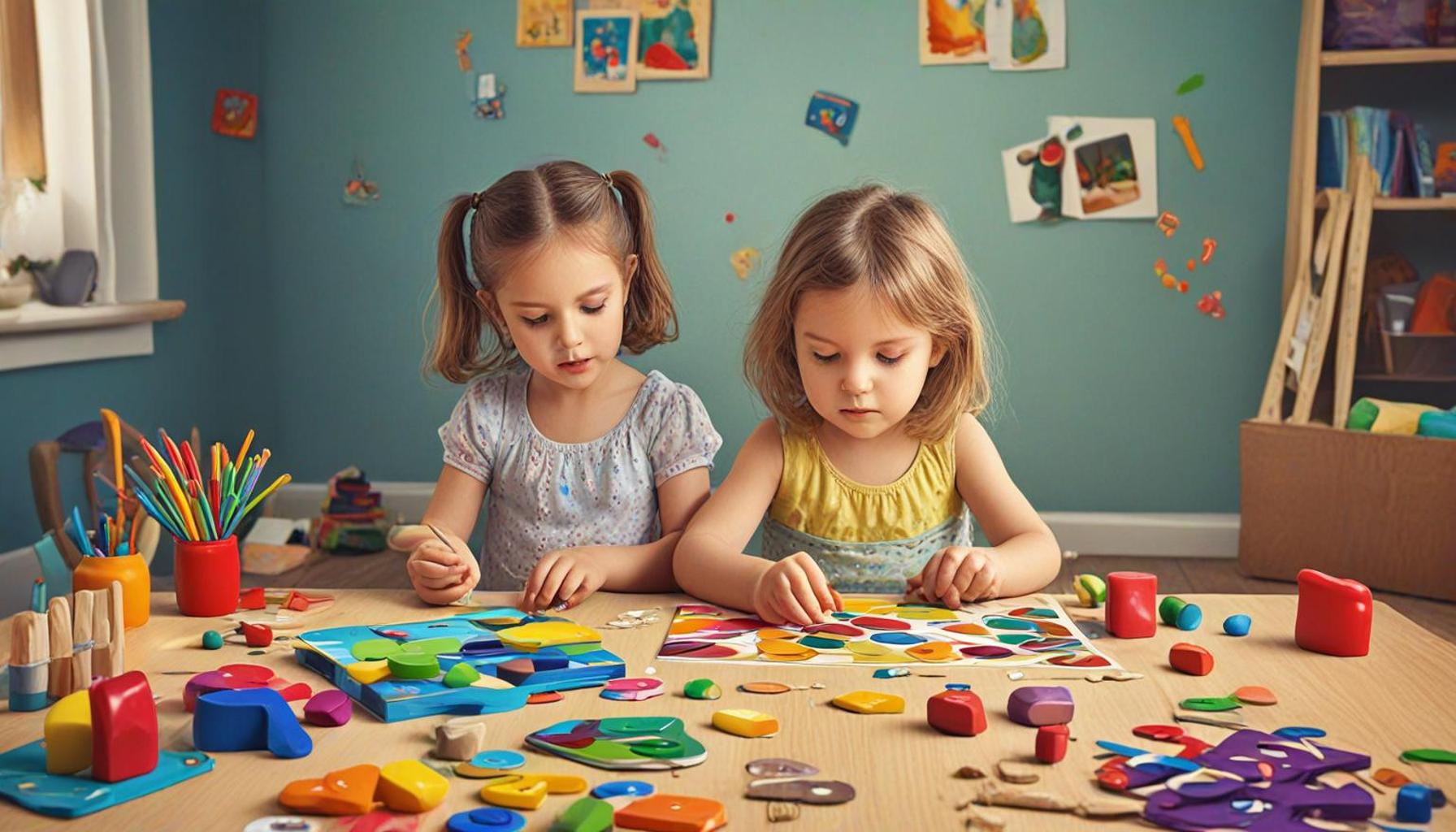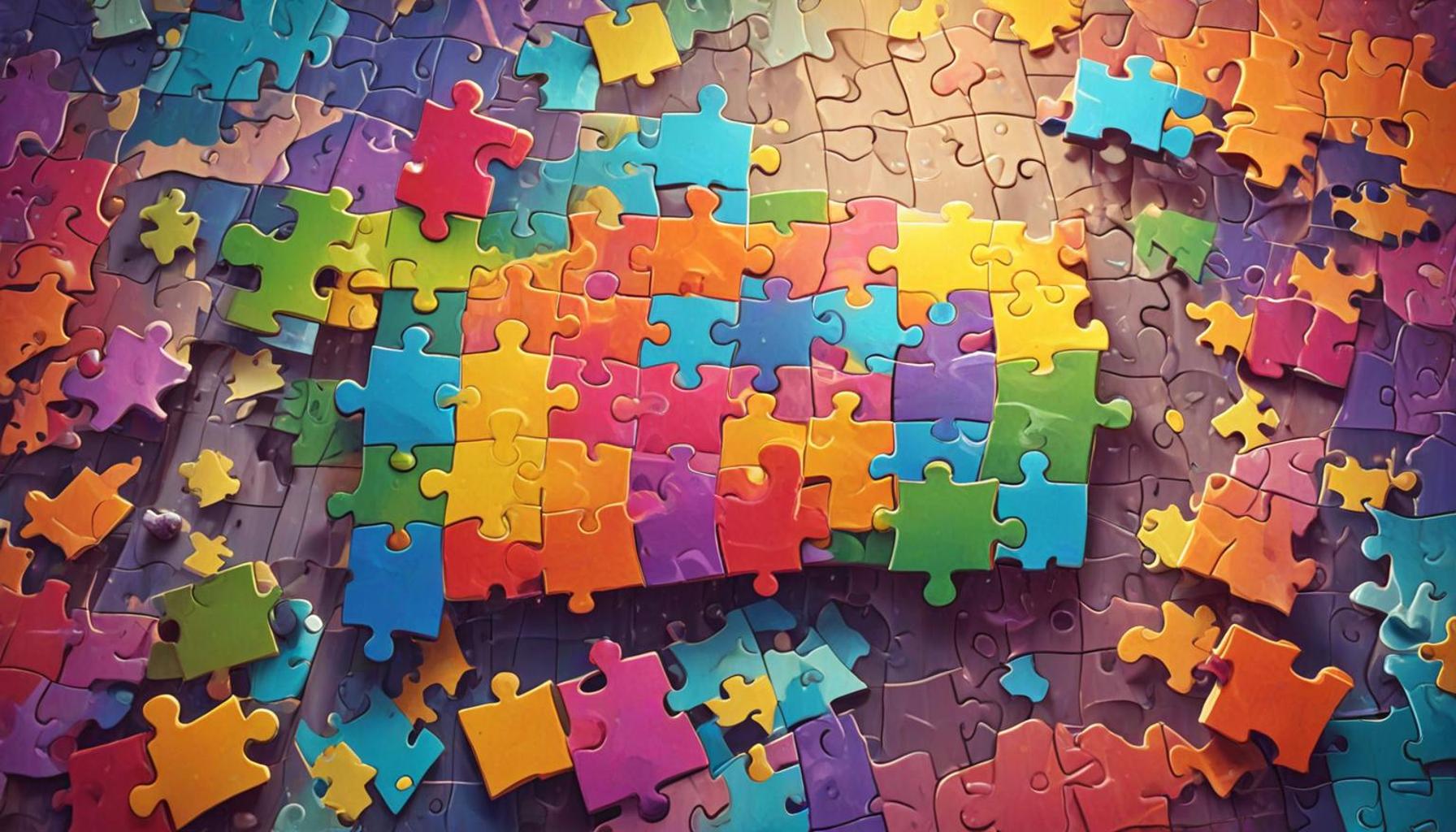Gamification and Memory: How to Incorporate Game Elements into Daily Routine to Increase Retention

Unlocking Learning Potential Through Fun
In the increasingly digital landscape of our lives, the need to absorb and retain information can often feel overwhelming. This is where the captivating concept of gamification comes into play, providing a fresh approach to learning that intertwines entertainment with education. By incorporating game-like elements into everyday tasks, we can transform our learning experiences into exciting adventures that not only capture our attention but significantly enhance memory retention and cognitive development.
The art of gamification utilizes various features to create engaging learning environments. Among its elements, we find:
- Point Systems: A rewarding mechanism that tracks progress and achievements. For example, students using educational apps can earn points for completing quizzes, which fosters a sense of accomplishment and urges them to continue learning.
- Challenges and Rewards: Setting specific tasks with corresponding rewards can stimulate motivation. This may include earning badges for mastering certain subjects or completing projects, which instills a sense of achievement and urgency.
- Competition: Introducing friendly contests or leaderboard scenarios can encourage users to put forth their best efforts. For instance, students could engage in timed spelling bees or math competitions that not only sharpen their skills but also promote a sense of community among peers.
In Nigeria, where educational reform is a pressing concern, the application of gamified methods in learning can significantly impact students’ academic journeys. Programs tailored for Nigerian learners are emerging, with platforms like Qwiklabs and 10Dents aiming to integrate gamification into learning. For example, a local app may allow students to earn virtual coins for completing mathematics exercises, creating an interactive way to make learning entertaining while also reinforcing critical thinking skills.
However, the challenge resides in seamlessly infusing these game elements into everyday routines. Identifying the existing educational frameworks and enhancing them through gamification could lead to a much-needed revolution in pedagogy, effectively promoting continuous engagement.
As we delve deeper into the relationship between gamification and memory enhancement, it becomes clear that the key to effective learning lies not merely in rigorous study but also in the joy derived from the process. By embracing these immersive and interactive techniques, we can enhance retention capabilities and transform knowledge acquisition into an engaging endeavor. Consider exploring educational tools and strategies that incorporate these gaming elements, and witness the remarkable difference they can make in your learning journey.

YOU MAY ALSO LIKE: Read read another article
Integrating Game Elements in Everyday Tasks
As we embark on the journey of enhancing memory through gamification, understanding how to integrate these game elements into our daily routines is crucial. Gamification isn’t solely limited to classrooms or structured learning environments; it can be applied in various scenarios to boost retention and make the mundane enjoyable. By transforming everyday tasks into interactive experiences, we not only spur motivation but also reinforce our ability to recall information effectively.
One effective way to incorporate game mechanics into daily tasks is through the use of apps and digital platforms. Numerous applications have surfaced, particularly within the educational technology landscape in Nigeria, designed to gamify learning processes. Take, for instance, platforms like Duolingo for language learning or Khan Academy for diverse subjects, which utilize points, achievements, and timed challenges to motivate users. This array of functionalities serves not only to engage users but also makes learning feel more like a game rather than a chore.
Moreover, one might consider establishing a point system for household chores or personal goals. Here’s how you can effectively create a gamified daily routine:
- Personal Goal Setting: Start by defining specific personal or academic objectives. Whether it’s reading a set number of pages a day or completing assignments, clarity on what you want to achieve is essential.
- Rewards and Incentives: Associate enjoyable rewards with accomplishments. For example, treat yourself to a favorite snack or an episode of a beloved series when you hit a certain target.
- Track Progress: Utilize apps or even a simple journal to keep track of your achievements. Seeing your progress visually represented can be a great motivator, much like seeing levels and scores in a video game.
- Engage Socially: Add elements of competition or collaboration by involving friends or family. Share your achievements or set challenges against one another, making the learning experience more collaborative and fun.
The concept is beautifully exemplified in initiatives launched within Nigerian schools, such as gamified learning modules that encourage students to tackle subjects through interactive platforms. Schools are beginning to harness the potential of these approaches, proving that education doesn’t have to be a laborious endeavor. Further, incorporating local contexts—like history or cultural narratives—into these gamified systems can resonate more with students, making the information more relatable and memorable.
While the integration of game elements into daily routines offers innovative structures for learning, it is vital to remain aware of the balance needed to ensure that these methods enhance rather than detract from the overall educational objective. Striving for enjoyment in learning through games can transform the way we perceive retention and knowledge absorption, ultimately elevating cognitive development and long-term memory capabilities.
Exploring Practical Applications of Gamification in Daily Life
Incorporating game elements into everyday tasks can dramatically enhance memory retention and make learning a more enjoyable experience. By infusing gamification techniques into your routine, you not only increase engagement but also create a more interactive learning environment. Here are some effective ways to integrate these game principles into various aspects of life:
1. Dynamic Habit Tracking
One of the simplest applications of gamification is through habit tracking. Transform mundane tasks into a game by setting challenges for yourself. Use apps that allow you to earn points or rewards for completing daily objectives. For example, if you’re trying to improve your physical fitness, you could set a goal of exercising three times a week. Each completed session earns you points toward a reward, whether it’s a new workout outfit or a special treat.
2. Quiz and Flashcard Games
Utilizing technology, quiz games and flashcards can greatly enhance memory retention. Learning platforms often feature game-based quizzes that encourage competition, making the educational experience both effective and exciting. This method not only tests your knowledge but also reinforces memory through repetition in a fun way. Consider using apps like Quizlet, where you can compete with others or challenge yourself to beat your previous scores.
3. Storytelling and Role-playing
Incorporate storytelling techniques and role-playing into your learning strategies to make information more relatable. For instance, when studying history, envision yourself as a character from that era and navigate through events as they unfold. This immersive technique transforms learning into an adventure, thereby making retention easier as you create mental connections to the material.
Benefits Beyond Retention
The advantages of using gamification extend beyond mere memory enhancement. It fosters *motivation*, encourages *self-assessment*, and cultivates a sense of community through collaborative learning. These aspects are vital for personal growth and could lead to significant improvements in various areas of life.
To further explore how you can leverage gamification and its impact on memory retention, consider experimenting with a few key elements in your daily routine. You’ll likely find that engaging with your tasks through a game-like lens will not only bolster your memory but also rejuvenate your approach to learning.
| Game Elements | Advantages |
|---|---|
| Points & Rewards | Motivates users to engage actively and complete tasks. |
| Challenges & Quests | Encourages incremental learning through achievable goals. |
| Collaboration | Promotes teamwork and community interaction, enhancing motivation. |
CHECK OUT: Click here to explore more
Leveraging Community and Competition for Enhanced Learning
The power of community engagement and competition cannot be underestimated when it comes to gamification and memory enhancement. By fostering an environment where individuals share their goals and achievements, we can create a collective motivation that encourages everyone involved to improve retention and learning outcomes. This principle can be particularly effective within family units, schools, or community groups where members can mutually benefit from each other’s experiences.
One notable example can be observed in community-driven fitness apps like MyFitnessPal or Strava, which encourage users to track their physical activities and share milestones with friends. Such platforms motivate users not only to achieve their personal fitness goals but also to remain accountable to their partners. This concept can easily be translated into the world of learning and retention.
For instance, to gamify studying or skill acquisition, consider creating a group study challenge with friends or classmates. Here’s how it can be set up:
- Group Challenges: Set common academic or skill learning objectives and create team-based competitions. For example, challenge each other to learn a new topic or complete a series of educational games on an app like Quizlet.
- Leaderboards: Establish a leaderboard where participants can track their progress and achievements, similar to how video game rankings function. This visibility not only creates friendly competition but also incentivizes participants to push their limits.
- Regular Meet-ups: Arrange regular discussions to share experiences, successes, and challenges faced during the learning journey. This social interaction can further reinforce the memory of the content discussed.
- Feedback Mechanism: Provide constructive feedback during these interactions, allowing everyone to learn from one another’s experiences and enhance retention strategies.
In Nigeria, we see community-based learning taking on greater significance, especially in educational settings. Schools and educational bodies are beginning to recognize the value of gamifying the classroom experience. Initiatives like EdTech programs are increasingly integrating social challenges into their curricula, allowing students to compete in knowledge quizzes or collaborate on projects, reinforcing learning through peer-to-peer interaction. Furthermore, these platforms often embed local cultures and languages, making the material more relatable and encouraging deeper memory retention.
Furthermore, digital platforms like ClassDojo are excellent tools for teachers looking to gamify their class experiences. By introducing a points system that rewards good behavior and class participation, students are more likely to engage with the material, enhancing their ability to retain information effectively. This method is adept at transforming traditional education into an interactive playground where game principles flourish.
As we navigate the intersection of gamification and memory retention, it’s essential to remember that the ultimate goal lies in creating an enjoyable learning environment. Incorporating elements of community and competition not only facilitates motivation but also synergizes with memory-enhancing techniques, effectively reshaping how knowledge is absorbed, retained, and recalled in the burgeoning educational landscape of Nigeria.
ADDITIONAL INSIGHTS: Expand your understanding here
Conclusion: The Future of Learning through Gamification
As we’ve explored throughout this article, gamification represents a powerful tool for enhancing memory retention and learning across various settings, particularly within the context of Nigeria’s evolving educational landscape. By integrating game elements such as challenges, leaderboards, and community engagement into daily routines, individuals of all ages can enhance their memory capabilities while enjoying the learning process.
The insights gained from successful models, such as community-driven apps and classroom initiatives, underscore the importance of creating supportive environments tailored to both individual and collective learning experiences. As students engage in friendly competition and share their progress with peers, they unlock profound opportunities for retention that go beyond traditional rote memorization. Activities that blend fun with learning not only motivate but also create lasting connections, ultimately leading to better understanding and recall.
Moreover, as the prevalence of EdTech solutions grows, the opportunity to leverage technology for gamification in Nigeria is more accessible than ever. Schools and educational institutions should consider adopting these strategies, ensuring that learning remains not only effective but also dynamic and relevant. By harnessing the synergy of game principles and educational practices, we are paving the way for a new paradigm where learning becomes an engaging adventure.
In conclusion, the incorporation of gamification into daily routines is not just a passing trend; it serves as a transformative approach to learning that can significantly improve retention and overall educational outcomes. As we embrace these innovative strategies, let us foster a culture of learning that celebrates curiosity, collaboration, and creativity.


